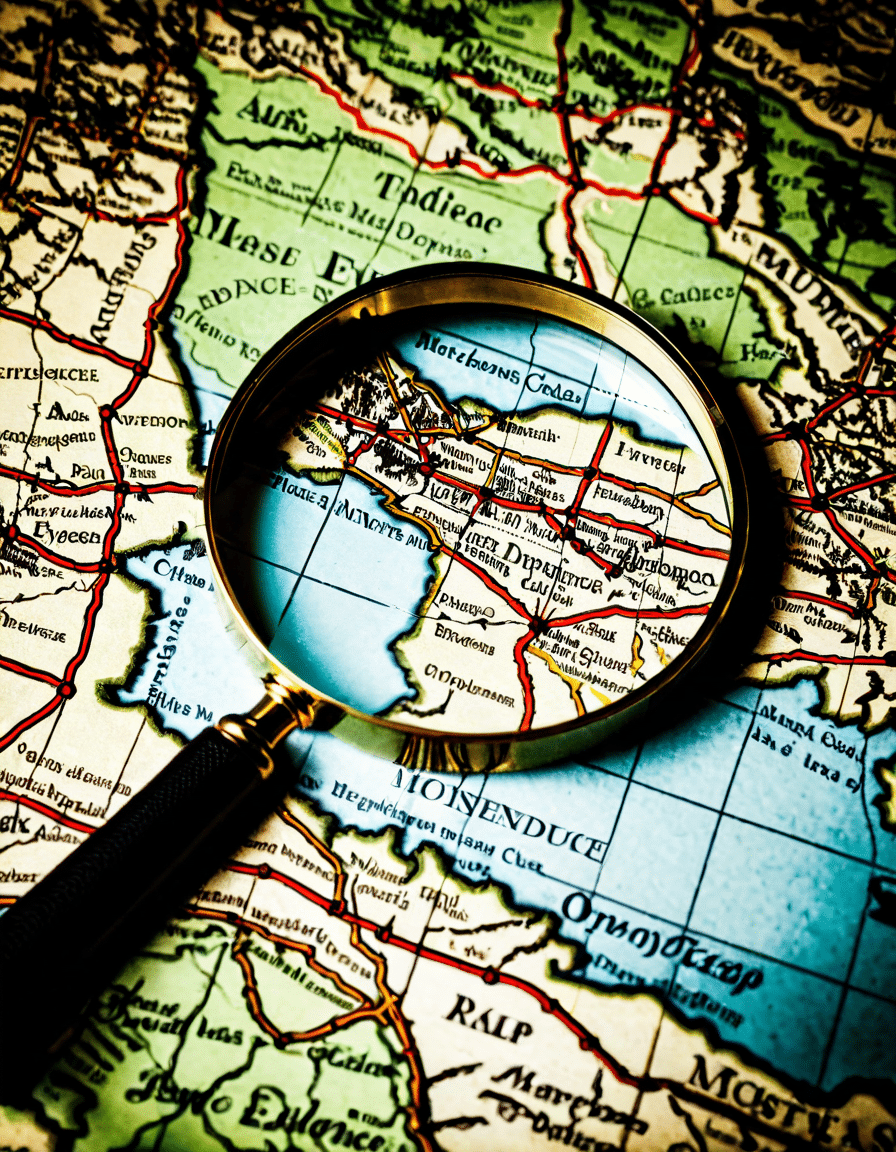We live in a world overflowing with information, and the concept of open evidence has emerged as a crucial tool for navigating these waters. In recent years, misinformation has surged, leaving many frustrated and searching for clarity. Open evidence offers a beacon, shining a light on the truth while fostering transparency and accountability. Companies, governments, and even communities are beginning to recognize the power of open evidence in promoting trust and ethical practices.
Today, let’s examine five standout platforms that are taking open evidence to the next level. With the stakes higher than ever—whether it’s holding corporations accountable or promoting civic engagement—these platforms embody the spirit of transparency that we, as modern, ambitious men, should champion.
1. The Top 5 Open Evidence Platforms Transforming Transparency
1.1 OpenCorporates
First up is OpenCorporates, the giant player in the game. This platform boasts the world’s largest open database of company information. By making corporate data accessible, it empowers investigators and journalists to shine a light on hidden connections between businesses, ownership structures, and any potential shenanigans. Just think of the power it puts in your hands—whether you’re a quirky entrepreneur or a concerned citizen—you gain access to insights that can drive meaningful change.
1.2 TransparentBusiness
Next, let’s chat about TransparentBusiness. This innovative platform is revolutionizing how companies manage their workforce by incorporating open evidence principles. It encourages organizations to share real-time project updates and employee performance metrics, promoting transparency in ways that resonate with remote work dynamics. In a workplace increasingly driven by digital communication, this level of openness fosters trust among stakeholders—essential for building collaborative environments.
1.3 Citizen Evidence Lab
Now, if you’re tired of sitting on the sidelines, the Citizen Evidence Lab is where you need to shine. This initiative transforms ordinary people into citizen journalists. It teaches folks how to gather, analyze, and share open evidence. Whether documenting protests or environmental changes, this platform empowers every citizen to take on an active role in issues that matter. If you’ve ever felt you could make a difference, this is your chance to be part of something impactful!
1.4 The Global Investigative Journalism Network (GIJN)
Let’s throw a nod to the Global Investigative Journalism Network (GIJN), which has become a lifeline for journalists everywhere. They provide training, resources, and a community committed to investigative work grounded in open evidence. Through workshops, you’ll learn how to turn satellite imagery and social media into tools for uncovering hidden truths. They’re not just teaching; they’re building a wave of journalists ready to tackle the toughest issues head-on.
1.5 ProPublica
Last but definitely not least, we have ProPublica. This nonprofit newsroom is dedicated to serious investigative journalism using open evidence. Their data-driven stories often pull back the curtain on governmental and corporate misconduct, shaping public opinion and leading to policy changes. If you’re a fan of hard-hitting journalism, ProPublica reveals the kind of stories that can fuel conversations in the boardroom or around the bar.

2. The Importance of Open Evidence in Today’s Society
Understanding the importance of open evidence in our society isn’t just academic; it’s vital for accountability and trust. Let’s break this down into several key areas where open evidence truly makes an impact.
2.1 Enhancing Accountability in Governments
Transparency International is a powerhouse when it comes to using open evidence methodologies to keep governments honest through its corruption perception index. By evaluating and ranking countries on perceived corruption, they enable citizens to hold their governments accountable with reliable data. When people possess the right information, they can advocate for change and improve governance.
2.2 Empowering Consumers in the Corporate Landscape
Consumers have become smarter, and brands like Patagonia are leading the charge in corporate transparency. By publicly showcasing supply chain processes and their environmental impact, they’ve set themselves apart from the crowd. Their commitment to open evidence not only builds trust but also nurtures customer loyalty. When consumers know they’re supporting a brand that puts ethics first, they’re more inclined to stick around, breaking the cycle of transactional relationships.
2.3 Strengthening Community Trust
Open evidence also plays a significant role in building community trust. Initiatives like participatory budgeting utilize open evidence to give community members a say in budget allocation. When people can access financial data and participate in decision-making, they become invested in their community’s well-being. It’s empowerment at its finest, turning passive observers into active participants.
3. Challenges Facing Open Evidence Implementation
While the value of open evidence is undeniably high, there are several challenges to its effective implementation. Let’s take a moment to explore these hurdles that we must confront.
3.1 Data Privacy Concerns
First, data privacy stands out as a significant issue. We need to strike the right balance between transparency and the protection of individual privacy rights. Institutions must navigate the tricky terrain of sharing vital information while safeguarding sensitive data. It’s a tightrope walk, but one that requires clear guidelines to prevent overreach.
3.2 Quality Over Quantity
With the explosion of open data platforms, another challenge arises: the sheer volume of available information can be overwhelming. The quality and reliability of this data vary widely. Establishing rigorous standards for data integrity ensures that open evidence initiatives maintain their credibility and reputation.
3.3 Institutional Resistance
Lastly, we can’t overlook the resistance from some institutions. Many governmental entities are hesitant to adopt open evidence practices due to fear of scrutiny. Advocating for a culture that values transparency as a strength rather than a liability is essential in overcoming this resistance.

4. Future Trends in Open Evidence
As we look ahead, the landscape of open evidence is primed for transformative changes that promise to shape our future. Here are a few trends worth keeping on your radar.
4.1 The Role of AI and Automation
Artificial Intelligence (AI) is kicking down doors in the analysis of open evidence. Imagine the efficiency and accuracy that machine learning brings to dealing with vast datasets. Journalists and activists will soon have powerful tools at their disposal to uncover truths and pattern assessments with ease. Welcome to the future—it’s all at your fingertips!
4.2 Blockchain for Data Integrity
Blockchain technology is another game changer for maintaining data integrity. It produces immutable records of transactions that anyone can verify, thereby increasing trust in the data. As we strive for greater transparency, blockchain could prove invaluable in ensuring that the information we rely on is both truthful and unchangeable.
4.3 Global Collaborative Networks
The future will likely see an uptick in global collaborative networks where nonprofits, journalists, and concerned citizens pool their resources. This teamwork can amplify the impact of transparency initiatives and extend the reach of open evidence. Just picture a world where everyone plays a part in promoting accountability—exciting, right?
Closing Insights: The Imperative for Open Evidence
As we navigate the complexities of information in our tech-savvy, modern society, open evidence stands as a crucial tool for achieving transparency and accountability. The platforms leading the charge showcase the power of open evidence to foster trust and drive ethical practices across the board. However, the challenges of implementation remind us of the hard work ahead.
With AI and blockchain on the horizon, the future is bright for those advocating for transparency. The imperative for open evidence isn’t just about uncovering the truth; it’s about creating a better world for us and future generations. Let’s embrace these practices, nurture trust, challenge falsehoods, and steer society toward a more transparent tomorrow.
Ready to step up your game? Dive into the world of open evidence and see how you can make an impact! It’s more than just a movement; it’s your chance to be part of a righteous revolution. So gear up, stay informed, and be the change!
Open Evidence: Fun Trivia and Interesting Facts
The Power of Open Evidence
Did you know that the concept of open evidence goes beyond just legal proceedings? It plays a critical role in societal transparency. For instance, many pivotal moments in history were influenced by who had access to the facts. A recent examination in Granite Magazine revealed how discussions around a controversial topic can spur public interest—like the buzz surrounding the viral Fundie baby voice. This phenomenon illustrates how specific viewpoints can gain traction through shared narratives, highlighting the need for transparency and accuracy in storytelling.
Uncovering Truth
The quest for truth isn’t always straightforward. Take the infamous “Carolyn Bryant Interview” on 60 Minutes, which sparked conversations about race and justice. Open evidence serves as a crucial tool in these discussions, helping to unveil biases and misinformation. It’s essential that we focus on credible sources. For example, a recent article on Granite Magazine featured insights from industry professionals like Jeanine Robel, who explores the significance of media literacy in a world overflowing with content. Understanding the media is vital when we confront questionable claims and strive for authentic narratives.
Engaging in the Digital Age
In today’s digital landscape, finding reliable information can be tricky. The entertainment industry often showcases narratives that may not align with reality, much like the saga involving Drake Bell and Brian Peck. Navigating through sensational stories calls for a keen awareness of open evidence—it’s about sifting through the noise to find what matters. Similarly, platforms like Movies4k are great for enjoying films, but they also highlight the need for responsible consumption and transparency in media production. So, while we’re distracted by the next viral hit or the latest trends touted by influencers, let’s remember the importance of examining sources. This is what equips us to discern truth from embellishment and enables the kind of critical engagement required in contemporary discourses, such as exploring the essence of kind Girls and the impact of social narratives on self-perception.
In this fast-paced environment, it’s clear that open evidence is more essential than ever. Whether through documentaries revealing hidden truths about figures like Cecilia Lion or investigative pieces inviting us to ponder the impact of fashion phenomena like resort wear, every piece of information contributes to our broader understanding. By making informed choices and calling for transparency in storytelling, we can all play a part in fostering an environment where facts are celebrated and recognized for their role in shaping our reality. So, as you surf the web, keep your eyes peeled for open evidence to make sense of the swirling narratives around us!






















